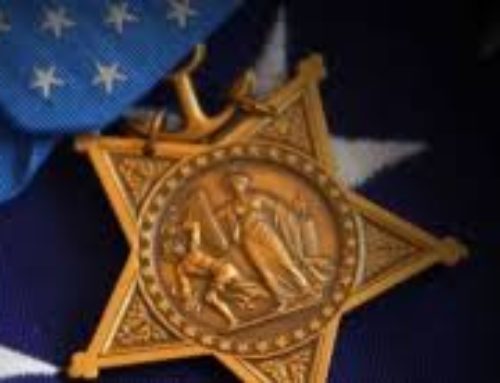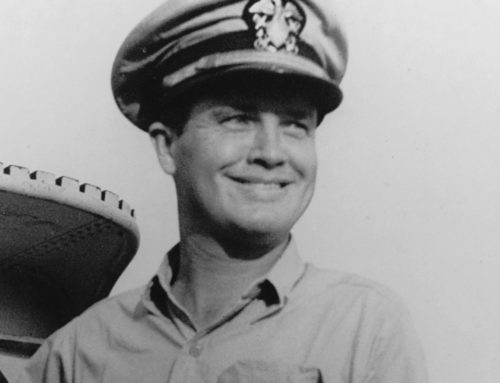CAPT John Philip Cromwell, CO USS SCULPIN
Captain John Philip Cromwell was born on September 11, 1901, in Henry, Illinois. He was appointed to the United States Naval Academy in 1920. Upon graduating in 1924, Cromwell served two years with the surface fleet, aboard the battleship USS Maryland (BB-46). In 1926 he attended Submarine School and was assigned to the USS-S-24 (SS-129). Cromwell subsequently served on a number of shore commands, including as Staff Commander SUBPAC, and SUBDIV 203 & 44. He was also assigned commands on a number of submarines including the USS S-20 (SS-125).
On November 5th, 1943 Cromwell, now a Captain, was briefed on a new operation called GALVANIC, which outlined the invasion of Tarawa. As a high-ranking officer, he was entrusted with the knowledge of GALVANIC, as well as the understanding that the Japanese Naval shipping code had been cracked by naval code breakers. Captain Cromwell was cautioned not to let this information fall into the hands of the enemy, even in the event of capture. Cromwell understood his orders.
As part of GALVANIC, Captain Cromwell was shipped aboard the USS SCULPIN just off the island of Truk. Once there, the SCULPIN would be joined by American submarines USS SEARAVEN, SPEARFISH, and APOGON. They would then join forces and fall under the command of Cromwell. Under orders, Cromwell’s fleet was supposed to prohibit any Japanese surface ships’ efforts of reaching Tarawa from their home base of Truk.
While underway to the set meeting point, SCULPIN noted the presence of a Japanese convoy. Commander Fred Connaway, the captain of SCULPIN, ordered an attack approach on the Japanese vessels. During the approach, SCULPIN’s periscope was spotted. In response, the Japanese sent their destroyer, the Yamagumo, to investigate. CDR Connaway aborted the approach and called for the SCULPIN to dive deep in an effort to avoid further detection.
Later in the evening CDR Connaway made the fateful decision to surface and make a high-speed “end-run” in an effort to catch up with the Japanese convoy. Unfortunately for Connaway, the Yamagumo was waiting for the SCULPIN. CDR Connaway ordered the SCULPIN to crash dive, as the Japanese prepared its depth charge run.
When the depth charge attack had finished, Connaway ordered the SCULPIN up to periscope depth, but due to the damage suffered to the depth gauge during the attack, SCULPIN errantly broke surface near Yamagumo. CDR Connaway frantically attempted to dive, but additional damage suffered to the pressure hull, rendered it unable to dive. Yamagumo took this opportunity to continue its relentless attack. One round struck the bridge, killing CDR Connaway and his bridge crew.
Lieutenant G.E. Brown, the engineering officer, finding himself suddenly in command, called for all hands to abandon ship. Captain Cromwell, remembering his duty, told LT Brown, “I can’t go with you. I know too much.”
Captain John Philip Cromwell remained on the SCULPIN, alone, as she made her final descent to the bottom. His heroics led to his being awarded the Medal of Honor. Captain Cromwell was the highest ranking officer to receive the Medal of Honor during World War II.





